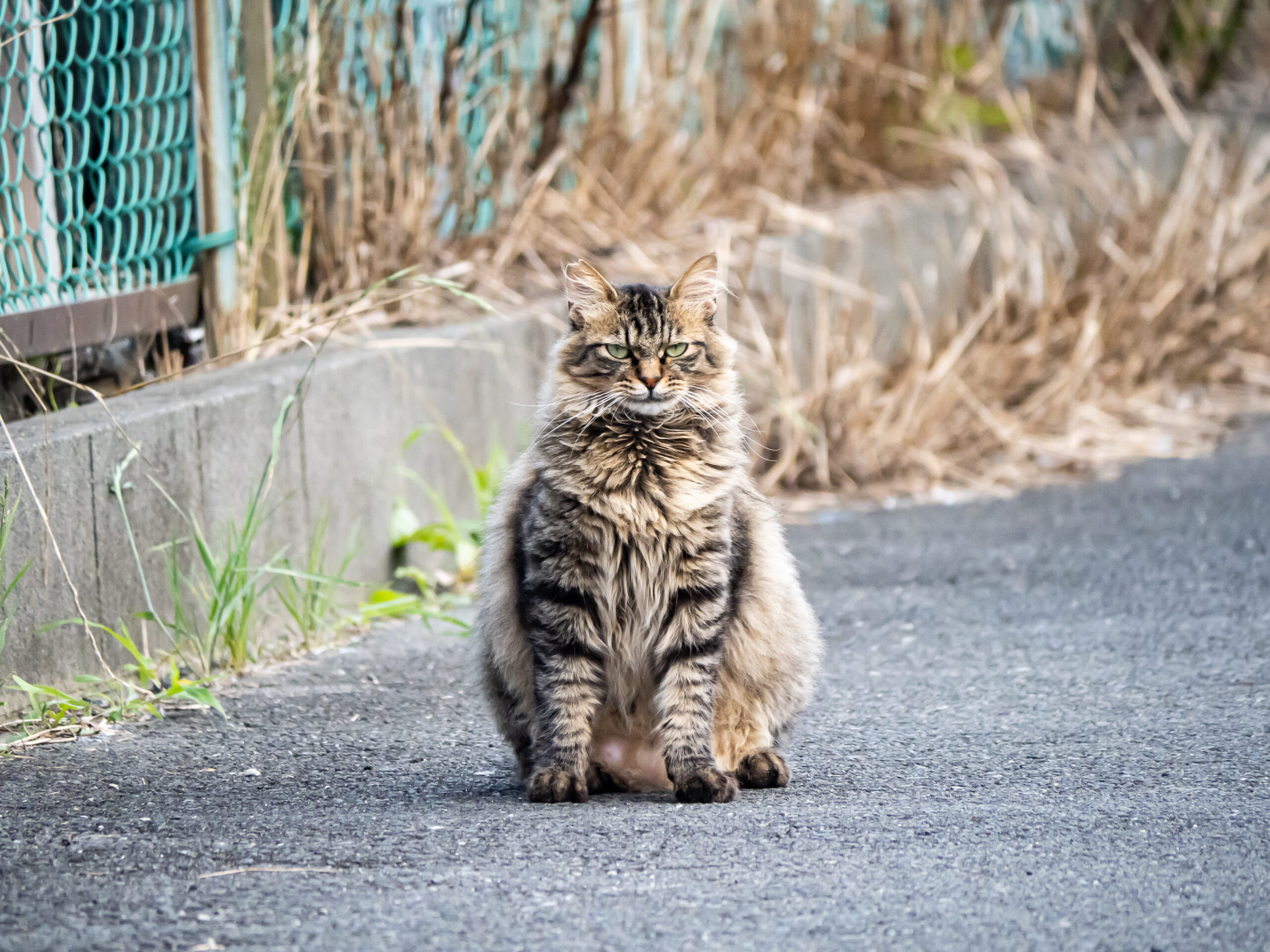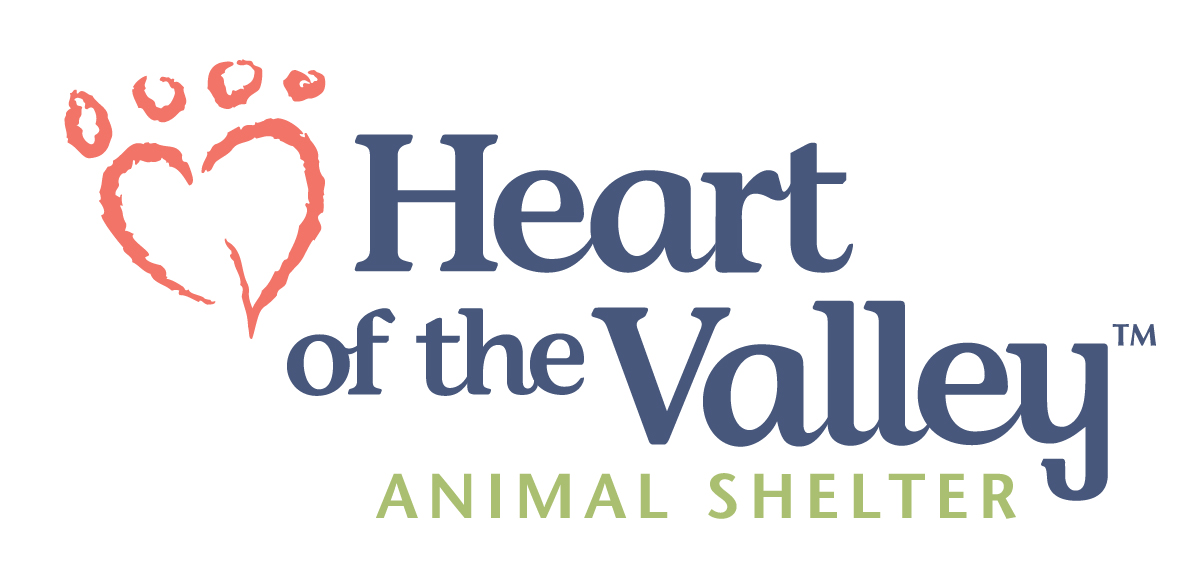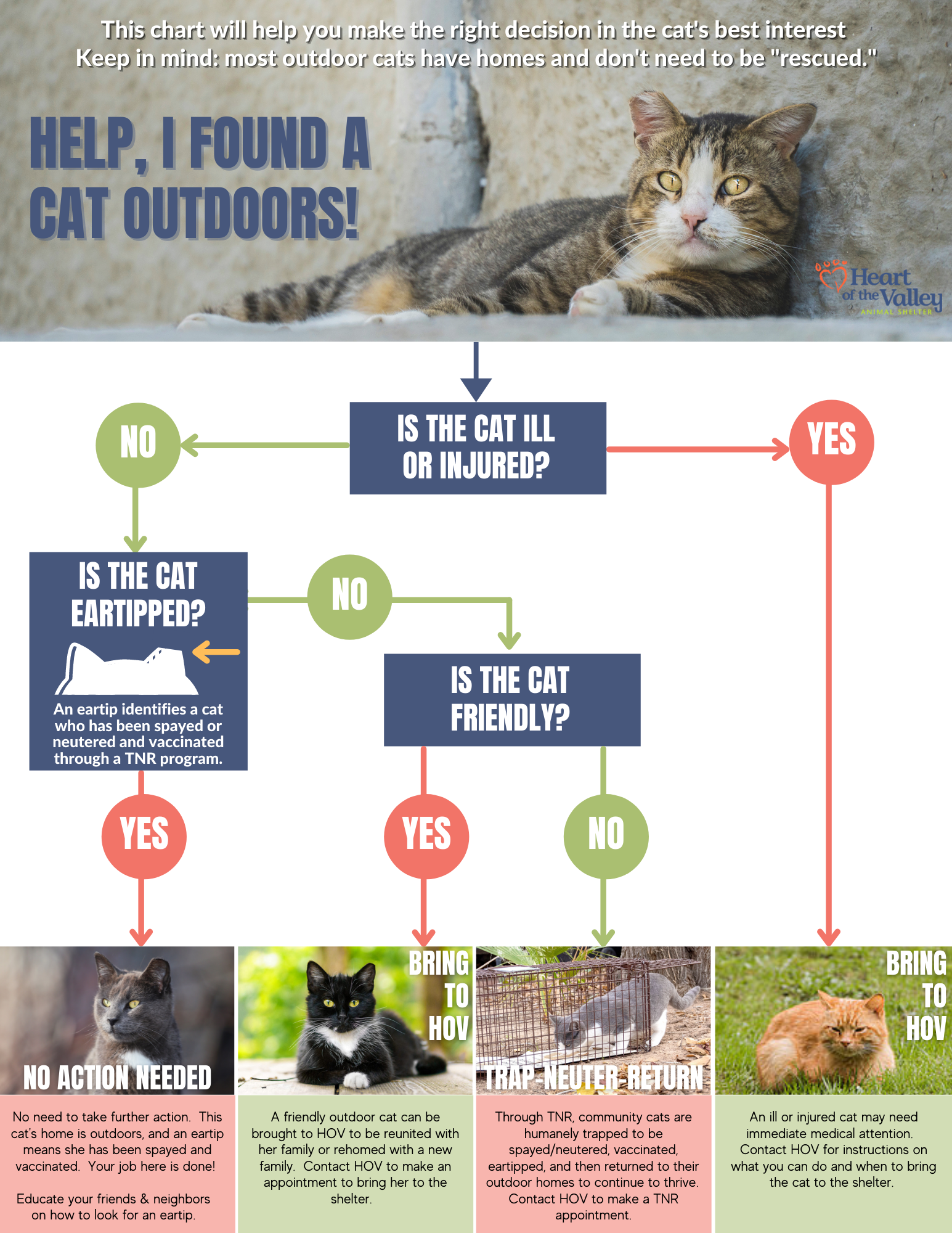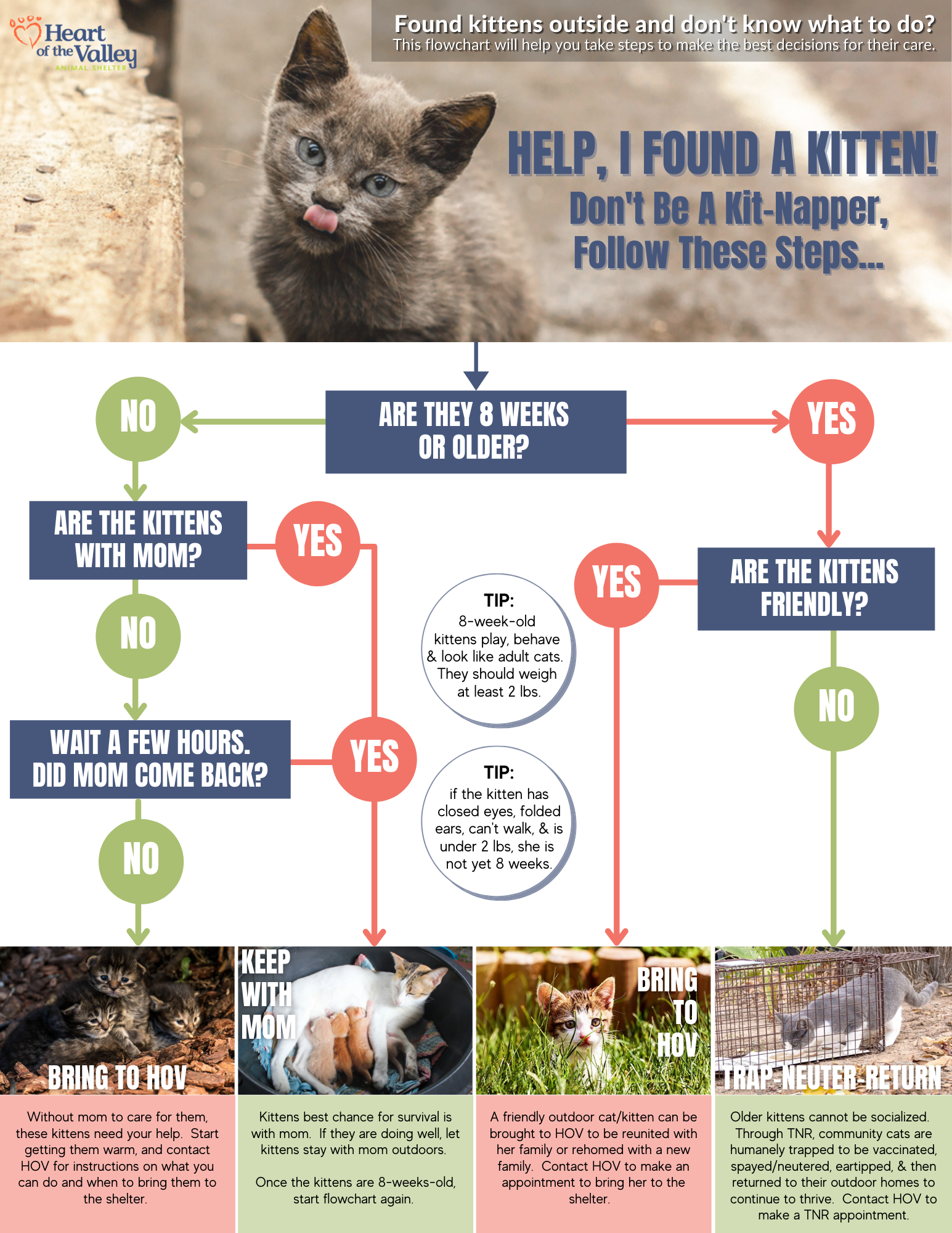Having lived outside for more than 10,000 years, cats have always been a part of our natural environment. While many cats you see have homes that allow them outdoors access, some are free roaming cats whose homes ARE outdoors. Typically these cats are unsocialized, also known as feral, and bringing them to a shelter for adoption is not an option, but having them spayed/neutered and vaccinated so they can return to their outdoors home is. Trap-Neuter-Return (TNR) is the nationally recognized humane choice for unsocialized cats. Which is why HOV has adopted this as our only solution for these cats. Check out the FAQs below to learn more about how you can make a difference in the lives of these cats.

TNR (Trap-Neuter-Return) is the humane, effective approach to addressing community cat populations. Through TNR cats are humanely trapped, spayed or neutered, and vaccinated. The tip of one ear is painlessly removed to indicate the cats are part of a TNR program. Healthy cats are then returned to their outdoor homes where they continue to live and thrive, ending the cycle of producing new litters of kittens. Across the country, TNR programs continue to grow because they have been proven successful in improving cat health and reducing cat populations in a wide variety of environments.
A feral cat is a cat who is too poorly socialized to be placed as a pet; because they are extremely fearful of people, their quality of life cannot be maintained in captivity. The ASPCA, HSUS, National Animal Care & Control Association, American Humane Association, Petco Foundation and PetSmart Charities are just a few of the national animal welfare organizations that support the management of community cats through TNR.
There are many reasons cat populations are rarely eliminated by trapping and killing cats. Community cats live at a certain location because it offers food and shelter. If cats are removed, cats from surrounding areas may move in to take advantage of the newly available resources. Then the cycle of reproduction and nuisance behavior begins all over again.
When some cats are removed, then the ones left behind will tend to have larger litters of kittens. The kittens are more likely to survive because there are fewer cats competing for food. The population will continue to increase until it reaches the number that can be supported by the available food and shelter.
An eartip is the universally recognized symbol of a cat who has been spayed or neutered and vaccinated. Eartipping is a painless and standard part of most Trap-Neuter-Return (TNR) programs, because it’s simply the best method to let everyone know at a glance that a cat has gone through a TNR program. As long as they appear healthy, there is no need to trap them again.
The ideal window for socializing (or acclimating cats to people) is when cats are young kittens. It is very difficult, and often impossible, to socialize an adult feral cat who has lived outdoors her whole life. Caged unsocialized cats in a shelter live in a constant state of stress and fear. TNR programs are the most humane way to help the most under-socialized cats.
If you would like to participate in the TNR program, please contact our Animal Services Coordinator at (406) 388-9399 ext. 204 or [email protected].
Click on the link below to see how Chicago is using feral cats to combat the city’s rat infestation:
https://www.theguardian.com/us-news/2021/may/14/chicago-feral-cats-rat-crisis
Other Resources
https://www.alleycat.org/our-work/trap-neuter-return/
https://www.alleycat.org/resources/why-trap-neuter-return-feral-cats-the-case-for-tnr/





